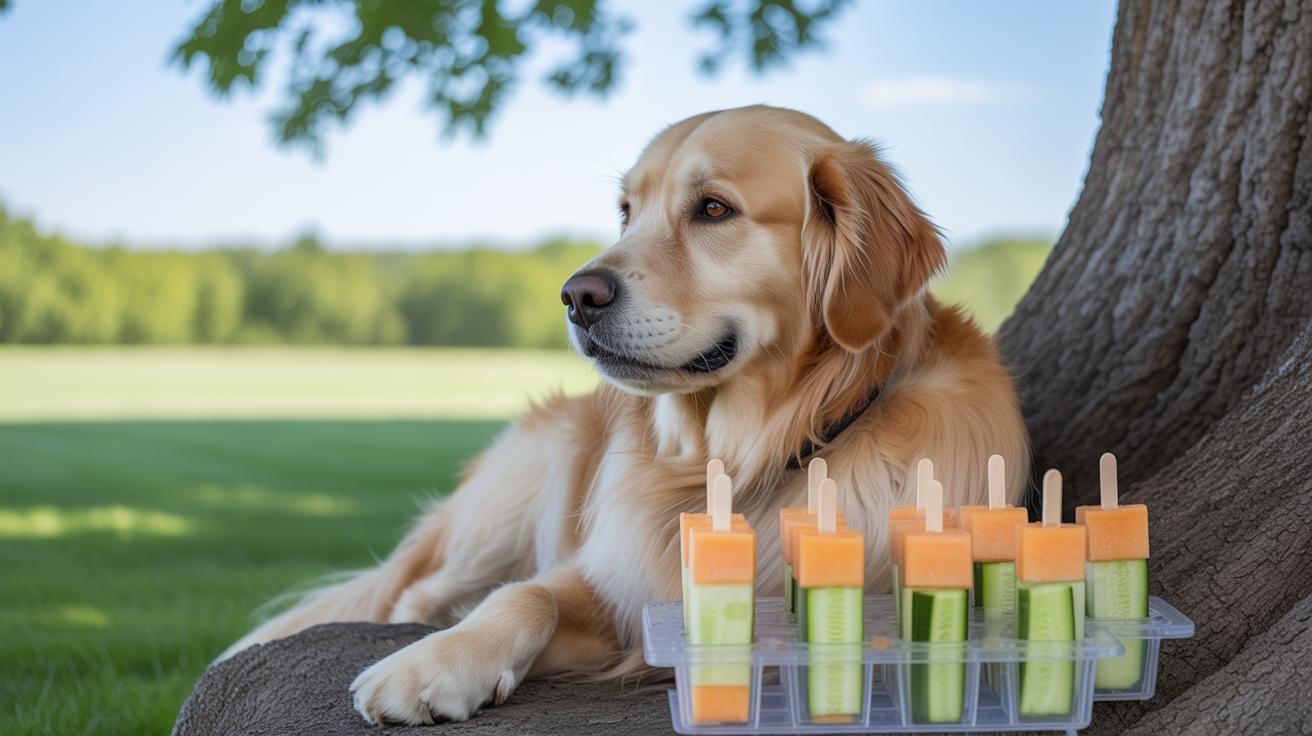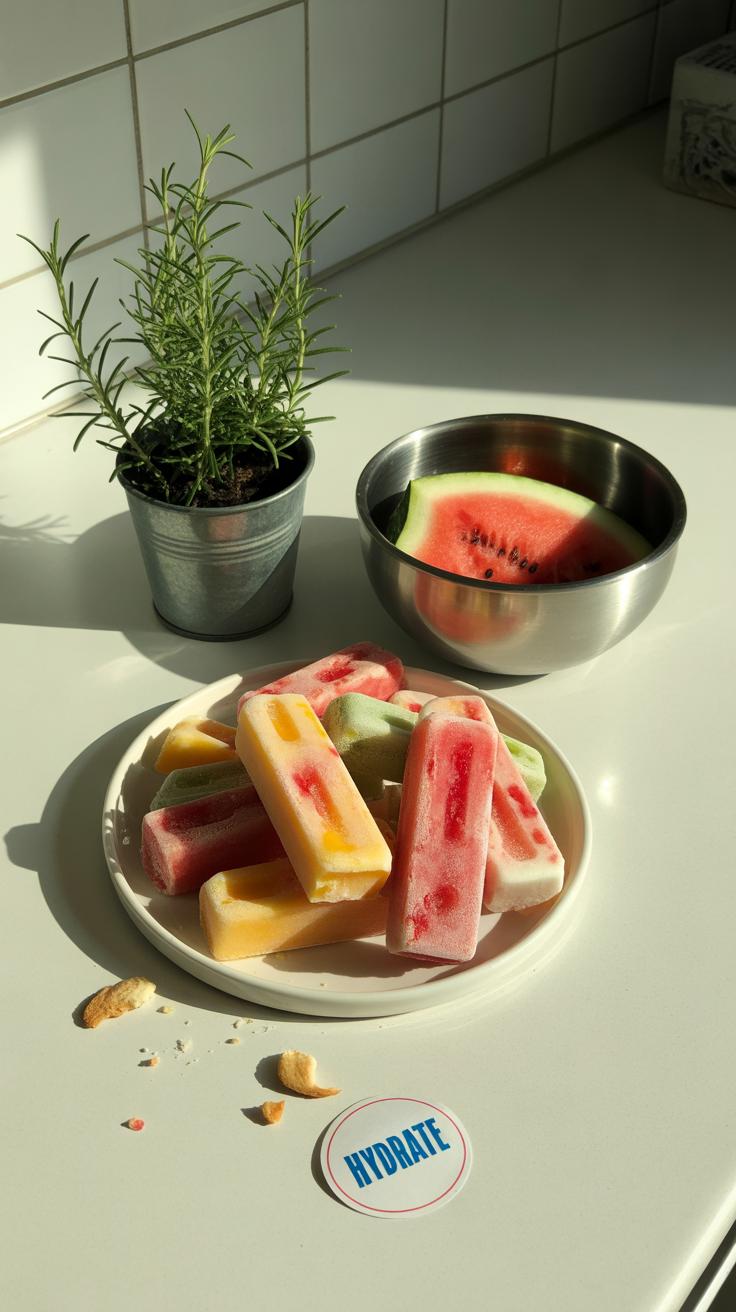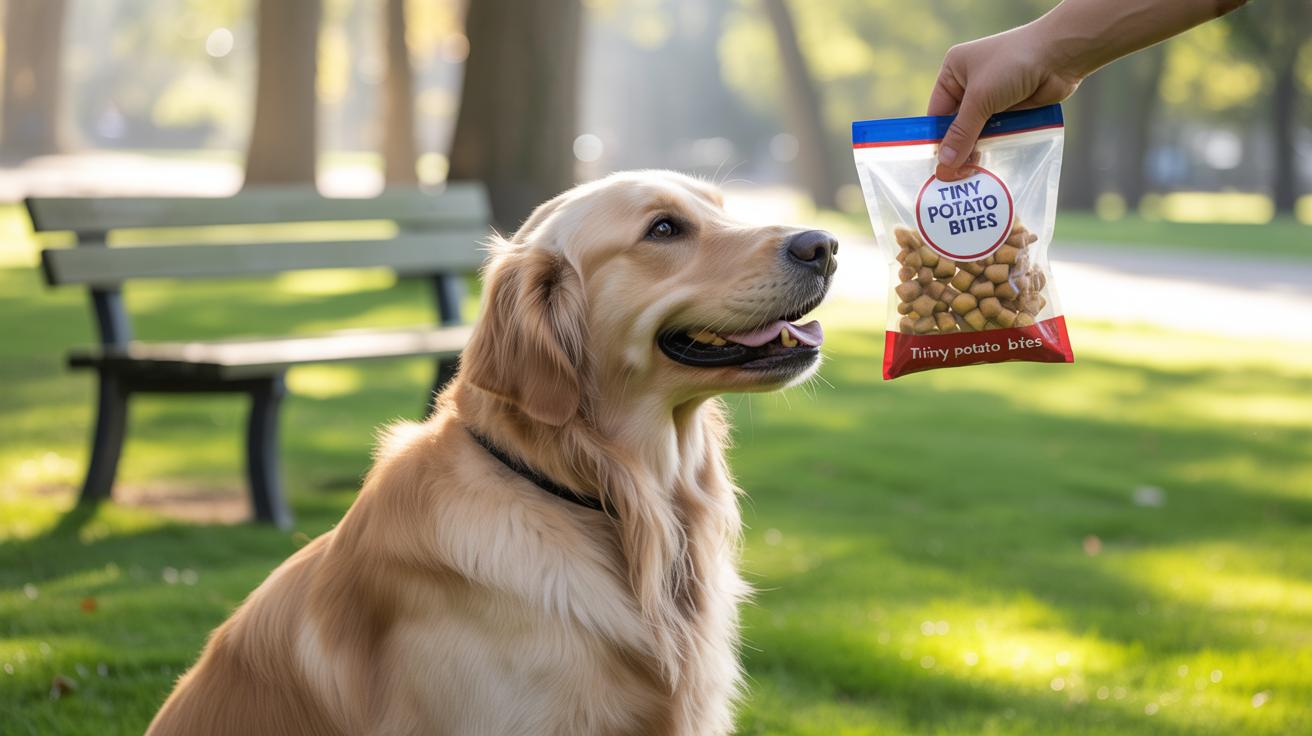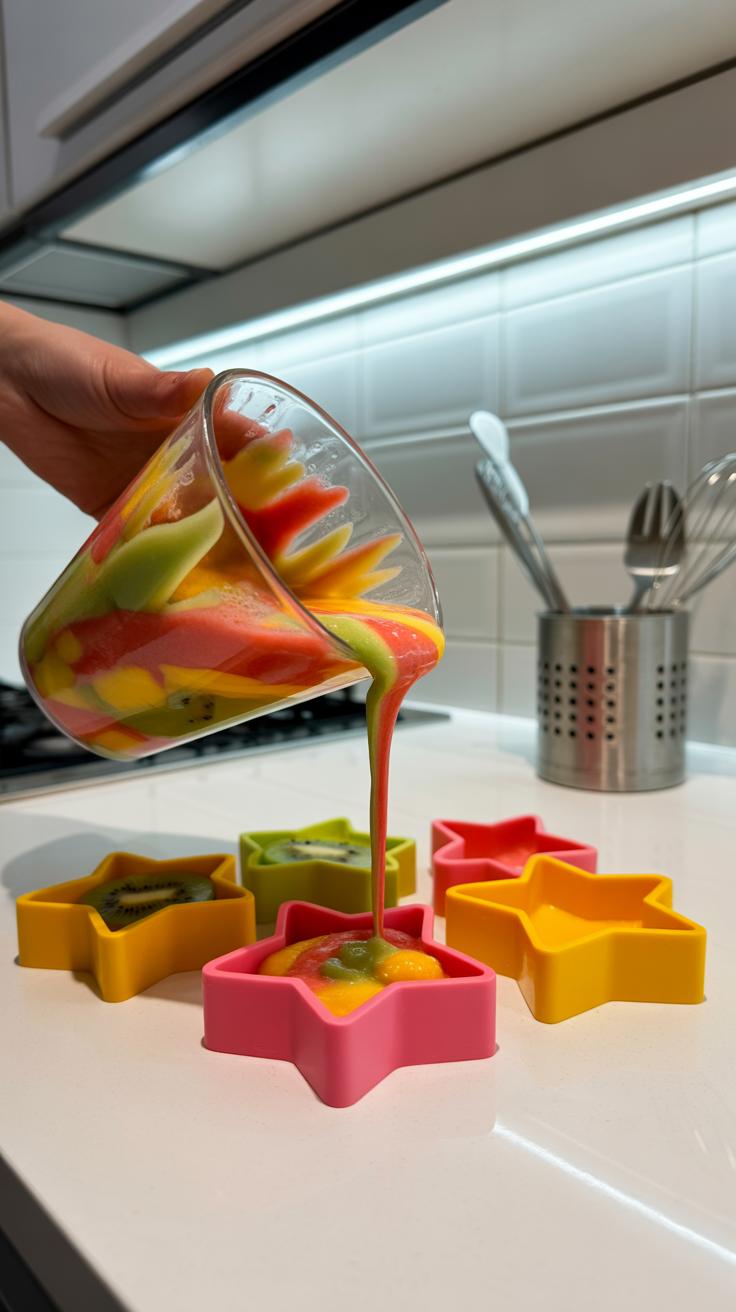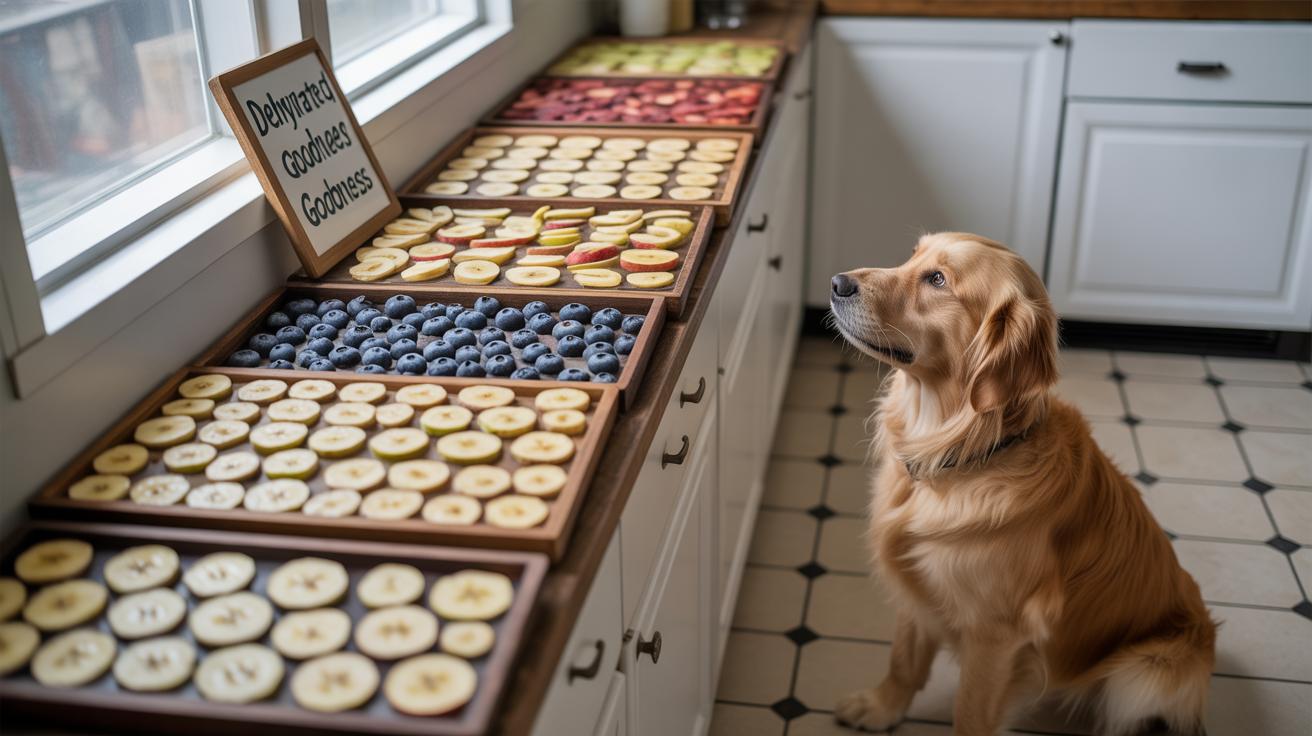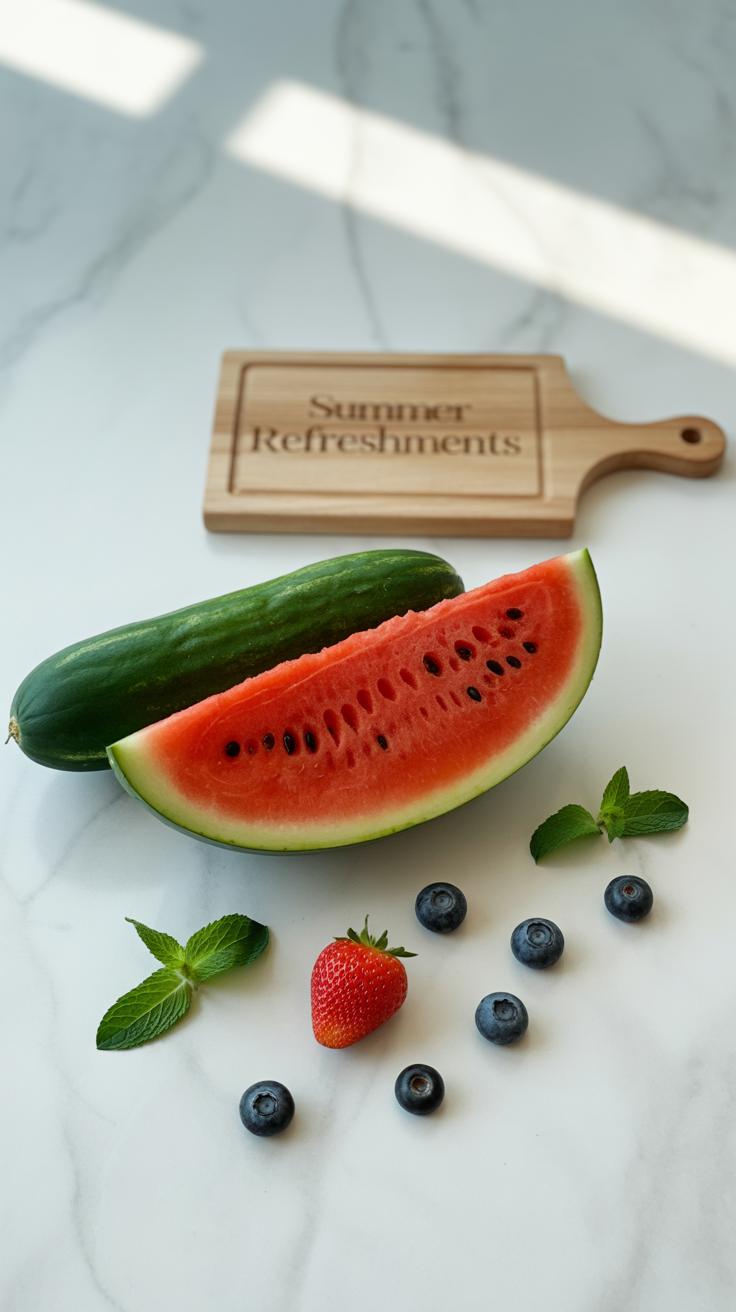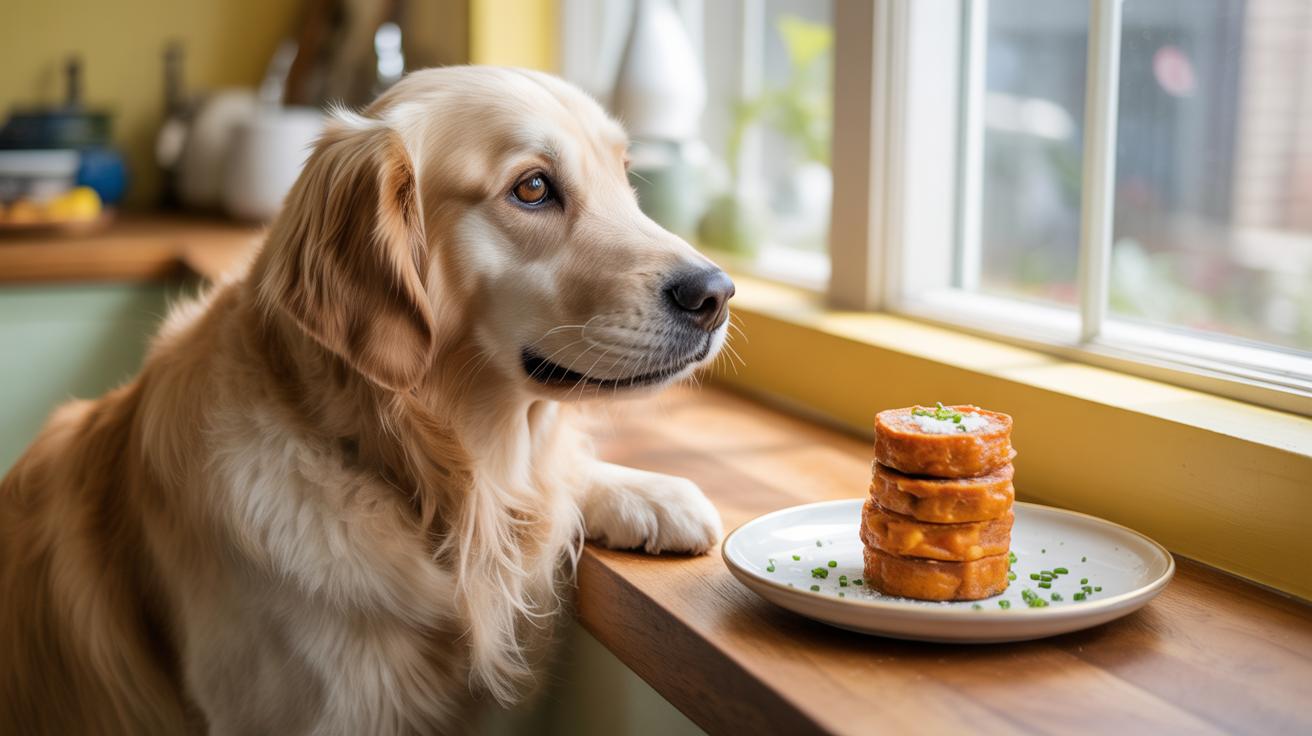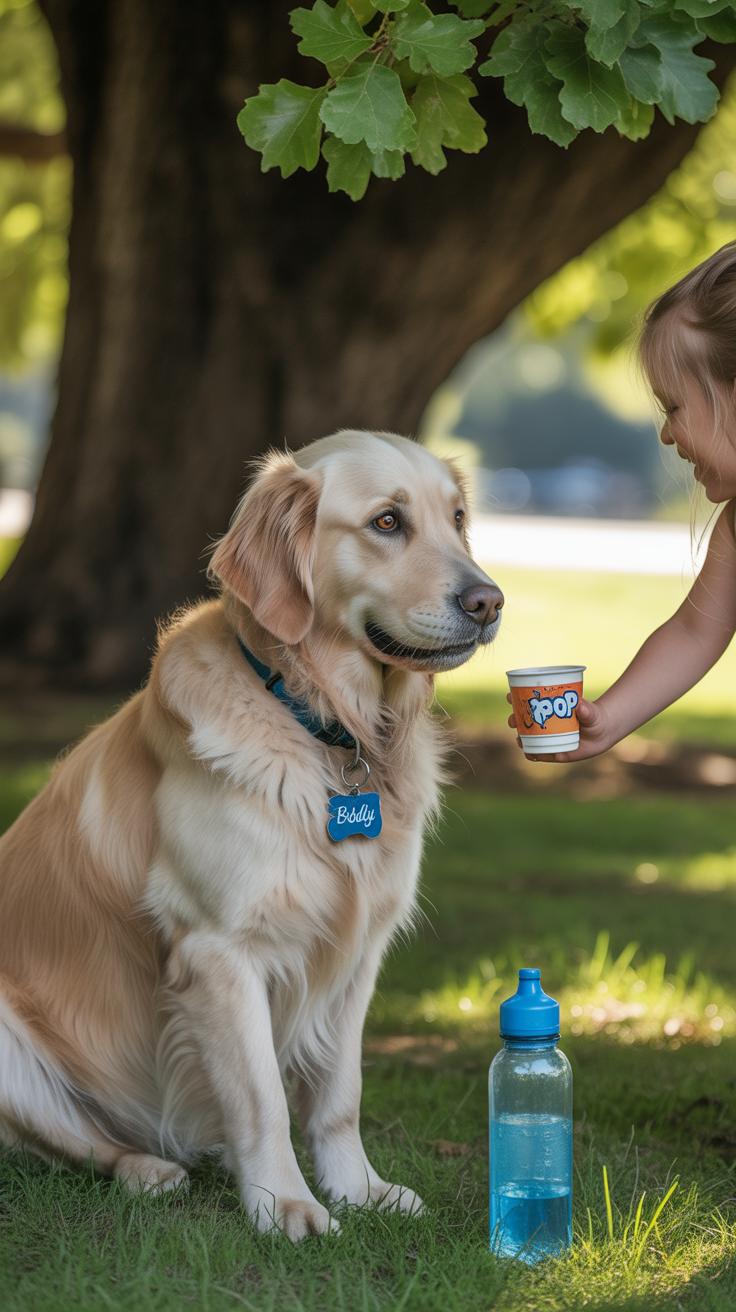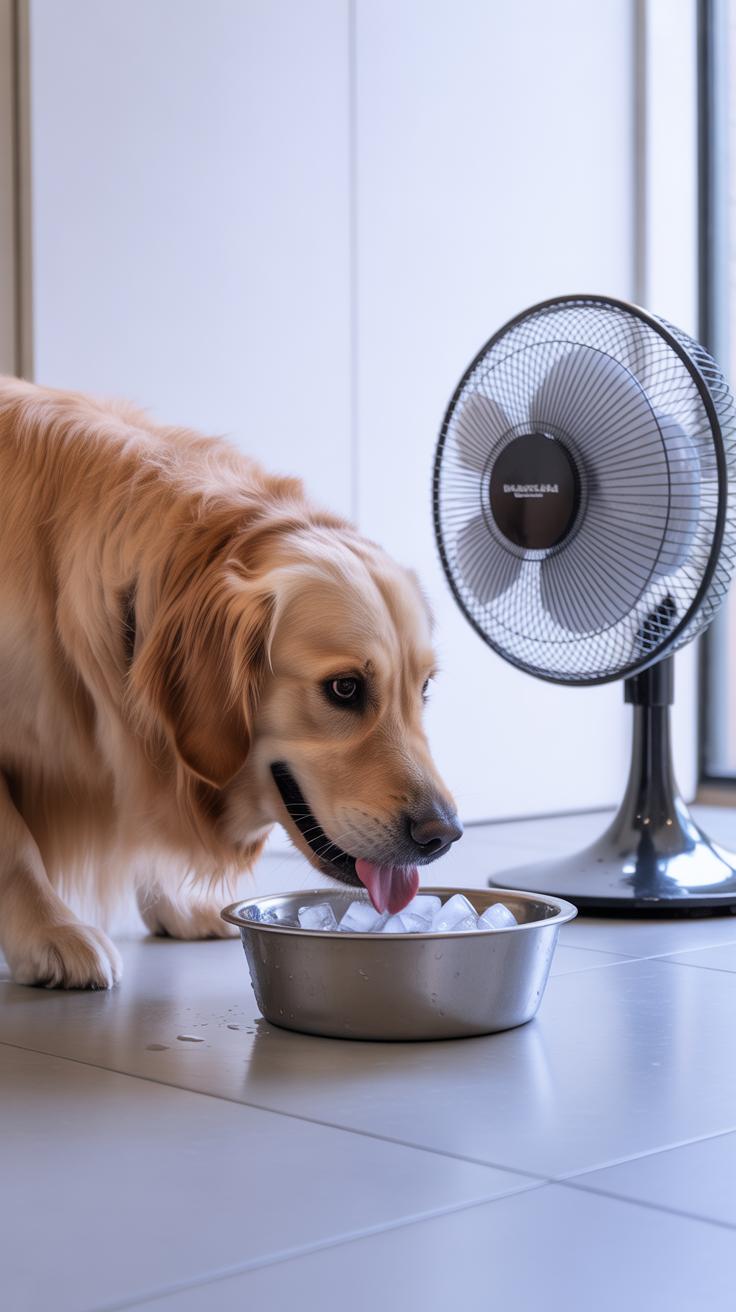Introduction
Summer can be hot and uncomfortable not just for us, but also for our dogs. Finding ways to keep your furry friend cool and happy is important. One way to do this is by offering summer treats made specifically for dogs that help them stay refreshed.
This article explores summer treats for dogs that act as cooling snacks without added sugar. We will discuss why avoiding added sugar is better for your dog’s health and share ideas and recipes for tasty, natural snacks that your dog will love during warm weather.
Why Choose SugarFree Summer Treats for Dogs
You might wonder why avoiding added sugar in your dog’s summer treats matters so much. It’s not just about keeping them slim, although that’s a big part of it. Sugary snacks can lead to several health issues that often fly under the radar until they become serious problems.
When dogs consume treats with added sugar, it’s easy for them to put on extra weight. Unlike people, dogs don’t burn off sugar calories as quickly, which can lead to obesity over time. I’ve seen friends struggle with this—their pets loved sweet bites but ended up with joint problems and fatigue. Obesity in dogs also increases the risk of diabetes, something that’s tricky to manage even with medications.
Dental health can suffer too. Sugar feeds bacteria in the mouth, promoting plaque and cavities. You might think dogs don’t get cavities like humans, but their gums can get inflamed, along with bad breath, making chew toys less enjoyable for them.
Metabolic complications are another concern. Too much sugar can throw off insulin levels and might cause energy spikes followed by crashes. That’s not ideal for a dog trying to stay active during hot days. Shouldn’t their treats be helping them feel steady and strong instead of spikes and dips?
Switching to natural, sugar-free snacks offers benefits that go beyond avoiding negatives. Many fruits and veggies naturally cool dogs and provide hydration. For example, watermelon or cucumber slices are not only refreshing but also supply vitamins and fiber. This kind of nutrition supports their overall health in a way sugary treats simply can’t.
So, when you pick snacks, you’re making more than a choice about flavor—you’re impacting your dog’s health and comfort through the summer months. It’s a bit of effort at first but makes a real difference. Isn’t that what any pet owner would want?
Understanding Dogs Diet and Nutritional Needs in Summer
When temperatures rise, your dog’s diet needs a little extra care. It’s not just about keeping them cool but making sure their body gets what it truly requires to handle the heat. Water plays the biggest role here—dogs lose it quickly through panting and drooling. So, you’ll want to keep fresh water accessible, but that alone might not be enough, especially if your dog is very active or spends lots of time outdoors.
Nutritionally, balance is key. Dogs need a steady supply of proteins and fats for energy, which helps them stay active without tiring too fast. But I’ve noticed that sometimes dogs eat less during summer heat, which could mean they’re missing out on important nutrients. You might want to watch for that and even tweak snacks or meals to make them more appealing and hydrating.
Think about electrolytes too: minerals like sodium, potassium, and magnesium help regulate fluids and nerve signals. These are often overlooked but quite important under warm conditions. Your dog doesn’t need a sports drink, but natural sources in their diet can make a difference.
Essential Nutrients for Dogs in Hot Weather
Energy-wise, dogs still need a good amount of protein and fat—even in summer. Sometimes it seems they want less food, but cutting essentials might backfire. Proteins help muscles repair and maintain strength, which keeps your dog agile despite the sluggish feeling heat can cause.
Vitamins also matter. B vitamins support energy production, and vitamins A and E act as antioxidants, helping skin and coat stay healthy despite sun exposure. Omega-3 fatty acids can help reduce heat-induced inflammation, a subtle need you might overlook when focusing only on hydration.
Don’t forget fiber. It might not scream “summer nutrient,” but fiber supports digestion, which can get a little off-balance when dogs eat less or drink more water.
How Hydration Impacts Dog Health
Water is essential, but beyond just offering a bowl, hydration can come from food too. Watery snacks—like cucumber slices or homemade frozen treats—can add to your dog’s fluid intake while being enjoyable.
Dehydration affects more than just thirst. It impacts body temperature regulation, kidney function, even cognitive focus. Dogs pant to cool off, but if they don’t drink enough, their system starts to strain. It might be subtle at first, like slight lethargy or dry gums, but it can escalate.
Try mixing hydration with nutrition. I’ve seen dogs perk up with frozen broth ice cubes or watermelon chunks, even if they usually avoid drinking a lot. Using natural, water-rich snacks can make hydration feel less like a chore—for you or your dog.
Simple Homemade SugarFree Cooling Treats for Dogs
Making summer treats for your dog at home can be simpler than you think. You don’t need fancy equipment or hard-to-find ingredients. Just use natural foods that are safe and refreshing. One easy way to cool your dog down is by combining dog-safe fruits with plain yogurt. I’ve tried blending blueberries or sliced apples into natural yogurt, then freezing the mixture in small silicone molds. The result? A creamy cold treat that’s gentle on your dog’s tummy and free from sugar.
Another idea that’s sort of neat—frozen fruit and yogurt treats don’t just taste good. They keep your dog hydrated and help regulate their temperature on the hottest days. Some dogs might hesitate at first, but most warm up to the texture quickly.
On a different note, you can try making flavored ice cubes that serve as mini snacks. Freeze low-sodium broth—chicken or beef—and toss in a few dog-safe herbs like parsley or mint before freezing. They add a bit of variety and hydration without unnecessary sugars.
If you want something really simple, just plain ice cubes with frozen blueberries or slices of cucumber work well. It feels like you’re spoiling your dog without any fuss. Have you ever noticed your dog’s excitement when you give them something cold to chew on? It’s worth trying a few recipes to see what your dog prefers.
These cooling treats aren’t just about beating the heat, they’re also about making snack time interesting and healthy during summer. You might find yourself wanting to taste-test a few—just to be sure.
Best Fruits and Vegetables as Summer Dog Treats
Hydrating Fruits for Dogs
When the temperature rises, offering your dog fruits that help them stay hydrated is a simple way to keep them comfortable. Watermelon is often a favorite for pups—not just because it’s juicy, but also because it’s mostly water. Little bites of seedless watermelon can cool your dog down while giving a mild sweetness without any added sugar. Blueberries also make a good choice. They’re small, easy to toss into a bowl, and packed with antioxidants, which could be an unexpected bonus when summer snacking.
You might wonder if other juicy fruits are just as good. Apples, for example, are crunchy and hydrating, but some dogs don’t find them as refreshing as watermelon. Every dog’s taste can be different, so it’s worth trying a few to see what they enjoy.
Crunchy Vegetables to Cool and Refresh
Vegetables with a high water content and crunchiness make natural, effective cooling snacks. Cucumber slices are refreshing with a crisp texture, plus they have very few calories. Many dogs seem to like the cool feeling from cucumber—maybe it’s the mild flavor or just the watery crunch. Carrots offer a bit more chew and can be sliced or given whole if your dog can handle that. They add a little natural sweetness but without any added sugars to worry about.
Other veggies like celery can work too, though the stringy texture might not please all dogs equally. You might have to experiment a bit. The key is that these veggies provide moisture, crunch, and something different from usual kibble snacks. They’re surprisingly handy to keep on hand during the hotter months.
StoreBought Cooling Treats Without Added Sugar
Choosing commercial dog treats that help keep your pet cool—and don’t have added sugar—can feel a bit tricky. Many products advertise “natural” or “healthy,” but it’s easy to miss hidden sugars or sweeteners that sneak into the ingredient list. You might assume a cooling treat would be straightforward, but it pays to double-check because some brands still add honey, molasses, or syrups for flavor.
When you read labels, look out for terms like sucrose, dextrose, maltose, corn syrup, and anything ending in “-ose.” These usually mean added sugars. Sometimes, added sweeteners come under less obvious names such as barley malt or evaporated cane juice. It’s almost like you need a degree in ingredient decoding to be sure—unless you just focus on treats that keep the list short and familiar.
Brands like The Honest Kitchen, Stella & Chewy’s, and Blue Buffalo offer some cooling treats that avoid added sugars. I’ve seen these often use natural, limited ingredients like pumpkin or sweet potato, which add subtle sweetness without extra sugars. Some even have frozen options designed to hydrate and cool, especially during hot spells.
How to Serve Cooling Treats Safely to Your Dog
Serving cooling treats to your dog might seem straightforward, but there are a few things to keep in mind to avoid upsetting their stomach or causing other issues. Portion size is key. Dogs, like people, can overdo it if given too many treats at once, especially when they’re frozen or chilled snacks that might be a bit harder to digest. A small, manageable amount—no more than 10% of their daily calorie intake—is usually a safe rule of thumb. For example, if you’re offering frozen watermelon cubes or yogurt drops, keep portions modest and see how your dog reacts.
The timing of these treats matters just as much. It’s tempting to give a cooling snack right before a walk on a hot day, but sometimes that can cause a bit of tummy trouble. I’ve noticed my dog does better with treats given an hour or so before activity or well after exercise, allowing the stomach to settle. Try splitting treats into smaller servings through the day, instead of one big “cool down” chunk. Your dog’s digestive system will thank you.
Portion Control and Treat Timing
Here’s a simple way to think about portioning and timing:
- Give treats in small amounts spread throughout the day rather than all at once.
- Avoid giving treats right before or immediately after vigorous exercise to prevent cramps or discomfort.
- Monitor your dog’s reaction—too much at once can cause loose stools or gas.
- Treats shouldn’t replace balanced meals; adjust meal size slightly if you’re giving extra snacks.
Avoiding Choking Hazards and Allergens
Cooling treats can sometimes be tricky if they’re too hard or large. Frozen treats, for instance, should be cut into small pieces to prevent choking—especially for smaller breeds or dogs that are not gentle chewers. I always check the size and texture before offering anything new. Also, be mindful of ingredients that may trigger allergies, like dairy or certain fruits. Even natural snacks like pumpkin or apples should be offered carefully—avoid seeds and skins whenever possible.
If your dog has a history of allergies, it’s best to introduce new treats one at a time, watching closely for any reaction. And don’t forget hydration—frozen treats are helpful, but water is the mainstay for safety during hot days.
Hydration Tips for Dogs in Summer
Keeping your dog hydrated during hot days goes beyond just offering cooling treats. Water is key, plain and simple. Dogs don’t always drink enough, especially when distracted or tired. Making water easy to find can make a real difference.
Setting Up Water Stations
At home, place several water bowls in different rooms or shaded outdoor spots. Think about where your dog usually spends time—maybe near their bed or favorite resting area. For outings, bring portable bowls or bottles designed just for dogs. Stopping frequently to offer water, even if your dog doesn’t seem thirsty, helps prevent dehydration.
Recognizing Dehydration Symptoms
Dehydration sneaks up quickly and can be tricky to spot early on. Look for dry gums, lethargy, excessive panting, or sticky saliva. Sometimes dogs get a little confused or disoriented too. If you suspect dehydration, offer small amounts of water slowly, avoid exertion in the heat, and contact your vet if symptoms persist. Trust your gut—if something feels off, it probably is.
Natural Ingredients to Avoid in Dog Treats
When choosing summer treats for your dog, not every natural ingredient is safe, even if it sounds healthy. Some fruits and vegetables that we enjoy can cause more harm than good for our furry friends. For instance, grapes and raisins are one of the most well-known dangers—they can seriously damage a dog’s kidneys. Similarly, onions and garlic, common in many kitchens, can lead to anemia in dogs, even in small amounts.
Other ingredients might not be toxic but can upset your dog’s stomach. Avocado, for example, contains persin, which isn’t the best for dogs, causing vomiting or diarrhea in some cases. Tomatoes, especially the green parts, can also be irritating, while cherries’ pits pose choking hazards and contain cyanide. It’s a bit confusing, right? This is why it’s better to double-check before giving your dog anything new.
Fruits and Vegetables Not Safe for Dogs
Some common fruits and veggies to steer clear of include:
- Grapes and raisins
- Onions and garlic
- Cherries (due to pits)
- Avocado
- Green tomatoes and potato leaves
- Rhubarb leaves
Remember, even a small amount might cause problems. You might think letting your dog nibble on a small piece won’t hurt, but it sometimes does.
Herbs and Spices to Avoid
It’s not just fruits and veggies you should watch. Herbs and spices can sneak into treats and be problematic. Nutmeg is toxic—dogs don’t handle it at all. Also, large amounts of cinnamon or cloves might irritate their digestive system. Some herbs, like garlic (yes, even in spice form), pose toxicity risks, as mentioned before. So, homemade treats flavored with these spices might not be such a great idea.
You may find recipes online recommending something that seems natural, but the reality is less clear. What seems like a harmless herb could worsen your dog’s condition or spoil their fun. So, better safe than sorry, especially in warm weather when dogs could get easily upset by stomach troubles.
Benefits of Cooling Treats for Dog Behavior and Mood
When the temperature rises, your dog’s comfort can really take a hit, and you might notice changes in their mood and behavior. Cooling treats offer more than just a tasty snack—they can ease discomfort and even help with irritability or restlessness caused by heat. I’ve seen my own dog become much more relaxed after enjoying a chilled, natural treat on a hot afternoon. It’s almost as if the treat helps them regain a bit of their usual calm.
There’s a real connection between comfort and behavior. When dogs feel too warm, they might pant excessively, pace, or seem unsettled. Cooling snacks can break that cycle by lowering their core temperature and offering relief in a way that’s simple but effective.
In terms of behavior, these treats might make your dog more cooperative or less prone to anxiety when outside during summer. Have you ever noticed your dog getting a little more focused during training after a refreshing break? That’s exactly the kind of effect cooling treats can provide.
Reducing Heat Stress and Anxiety
Heat stress doesn’t only affect the body; it can ramp up anxiety too. When your dog feels overheated, their nervous system reacts, and that can lead to signs of distress. Cooling treats, especially those with hydrating ingredients like watermelon or cucumber, can help bring down their body temperature gently. This often calms them down, reducing restlessness or nervous pacing.
It’s interesting—sometimes dogs don’t just tolerate the heat, they get almost visibly anxious about going outdoors during warm days. The offer of a cooling snack can become a kind of comfort ritual, signaling relief and helping them settle mentally as well as physically. I think that small act of giving something cool can do more than we expect.
Increasing Engagement and Training Rewards
Using cooling treats as rewards during summer play or training adds a refreshing twist that dogs seem to appreciate. Instead of typical dry biscuits, a chilled snack can keep interest high when the sun is beating down.
Imagine calling your dog for a quick sit or recall in the heat: a juicy, cold treat might be so much more motivating. These snacks can turn a tough training session into something enjoyable and help maintain your dog’s enthusiasm, even on sluggish days. Yet, it’s not just about motivation; it also gives your dog a moment to cool off and recharge, which could mean longer, better-focus sessions overall.
So next time you’re working with your dog in the summer, consider swapping the usual treat for something cooling. It might feel like a small shift, but it changes their experience—and maybe even yours—quite a bit.
Planning Summer Treats as Part of Overall Dog Care
Summer treats are more than just a way to cool your dog down—they can fit into a broader plan for keeping your pet safe and healthy during hot months. Think of these snacks as one piece of the puzzle. When paired with the right exercise routine and health checks, they can help your dog feel better and stay active without overdoing it in the heat.
Keeping nutrition balanced during summer can be tricky. Dogs might eat less when it’s hot, so offering treats that hydrate and provide nutrients can make a difference. It doesn’t mean extra calories or sugar, but smart choices that support energy without stressing their system. Maybe you notice your dog’s appetite shifts in summer—adjust meals and treats accordingly.
Exercise needs to adjust, too. Long midday walks might not be the best idea, but shorter, gentle outings when it’s cooler can keep your dog fit. Summer treats can act as motivation or rewards during those times, helping to keep activity enjoyable and safe.
Regular vet visits shouldn’t slip in summer just because it seems like a relaxed time. Dogs can suffer from heat-related issues or hidden conditions that get worse with warm weather. Checking in helps catch problems early, and your vet can offer advice tailored to your dog’s needs, including how treats fit into their diet and hydration.
Also, watch your dog closely for signs of heat stress or discomfort—like excessive panting, lethargy, or loss of appetite. Treats alone aren’t enough if overall care isn’t adjusting to the season. What you feed them is important, but so is how and when you feed, exercise, and observe them.
Planning summer treats thoughtfully means seeing them as part of this bigger picture. It’s not just a snack; it’s a way to support your dog’s health while keeping summer fun and safe.
Conclusions
Choosing summer treats that cool your dog without added sugar supports their health and comfort during warm days. These treats provide hydration, aid digestion, and prevent excessive calorie intake that sugary snacks cause.
You can make simple, natural, sugar-free snacks at home or find healthy options that keep your dog refreshed and safe. Paying attention to what your dog eats during summer helps maintain their energy and well-being in the heat. Try these ideas to help your dog enjoy the summer.

